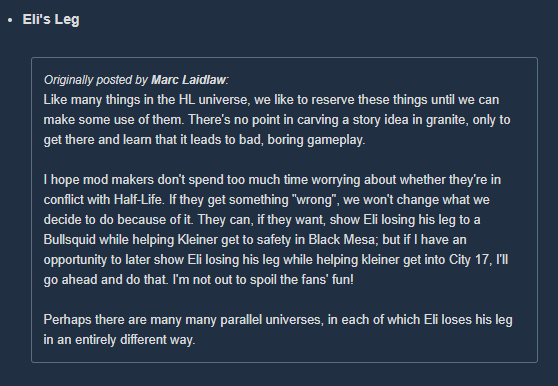
With Half-Life: Alyx on the horizon, now feels like a good time to talk about canon*. Canon – that collection of ideas, characters, and events held to be ‘official’ and existing within the creators’ universe. Which is to say everything that Half-Life: A Place in the West is not. The comic, as pure fan fiction, is stringently non-canonical. So, what is it that canon means to us and how do we go about situating our story in the framework Valve’s provided us with?
*May or not have been prompted by a bit of heckling I received on Twitter by the so-called ‘@lorekeeperhl’, who questioned one of our creative choices. As they should. They are the lore keeper, man.If this were six, seven years ago I would have greeted the announcement of a new Half-Life game with something akin to excitement. After all, it’s a series I quite enjoy – one I enjoyed so much I co-produced a comic based on its world. But as time went by and distance between the present and the release of the last instalment grew, that potential for excitement began to wane. Instead, it found its way into the comic. By and large this wasn’t the worst thing in the world. Confident in our grasp of Half-Life’s particulars, our plans for the comic became increasingly ambitious, and for Mike and myself the franchise was APW. In the sense that this mindset allowed us to focus on telling our own unique story, this was profoundly liberating. Half-Life served us.
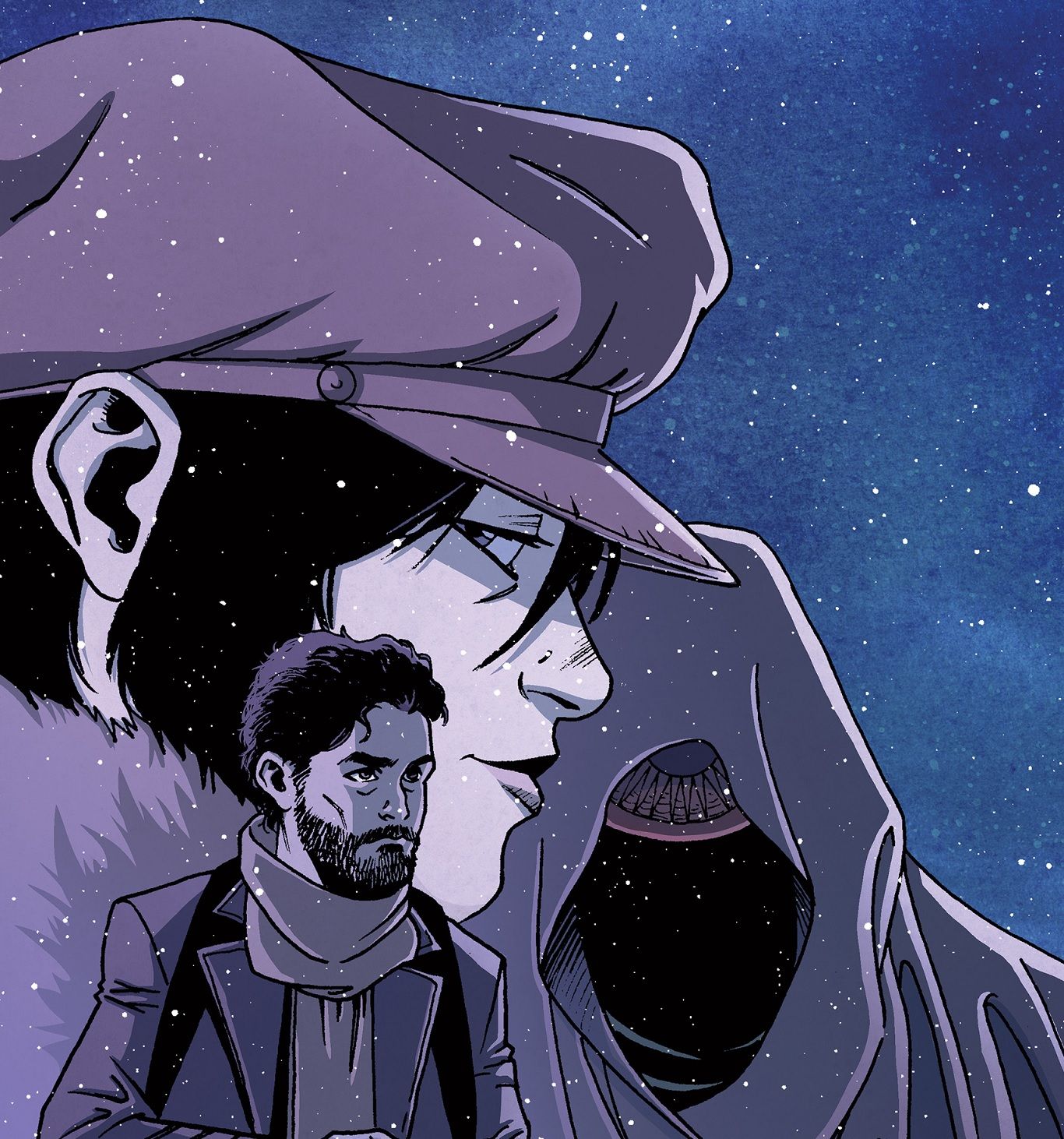
And then in November 2019, Valve announced a new VR exclusive – the aforementioned Half-Life: Alyx. And it was coming in March. Like, four months. A decade and change of nothing and then it’s coming in four months. Oh, Valve. It’s exactly what almost every fan of the series had been waiting for. Well, not exactly; a prequel that sent us back to City 17 wasn’t quite the follow-up to Episode Two’s cliffhanger folks had wanted, but who’s really going to complain about a new Half-Life game?
I mean, who’d do that? What kind of people would greet this announcement with trepidation, even a touch of dismay? Well, probably all those fans - like me - who can't actually play Alyx owing to the expense of the hardware. But there's another class of person, a bad class, and two such individuals would be myself and Michael Pelletier. To be fair, Mike mostly took it in his stride, but me, well, I kinda panicked. And I panicked because of a fiction I’d told myself in the interim between Episode Two and the inevitable follow-up: that we were canonically in the clear. Which is not to say I’d lost my mind and considered us canon, but rather that the essentials of the Half-Life universe were such that nothing we had chosen to pursue would be contradicted by Valve’s future choices.
This was a problem of my own making, because...of course they would. This seems especially true given one of our antagonists was the leader of the HECU, a main faction in the first game. Of course, I say “was”, but canonically he was not. Tricky, isn’t it?
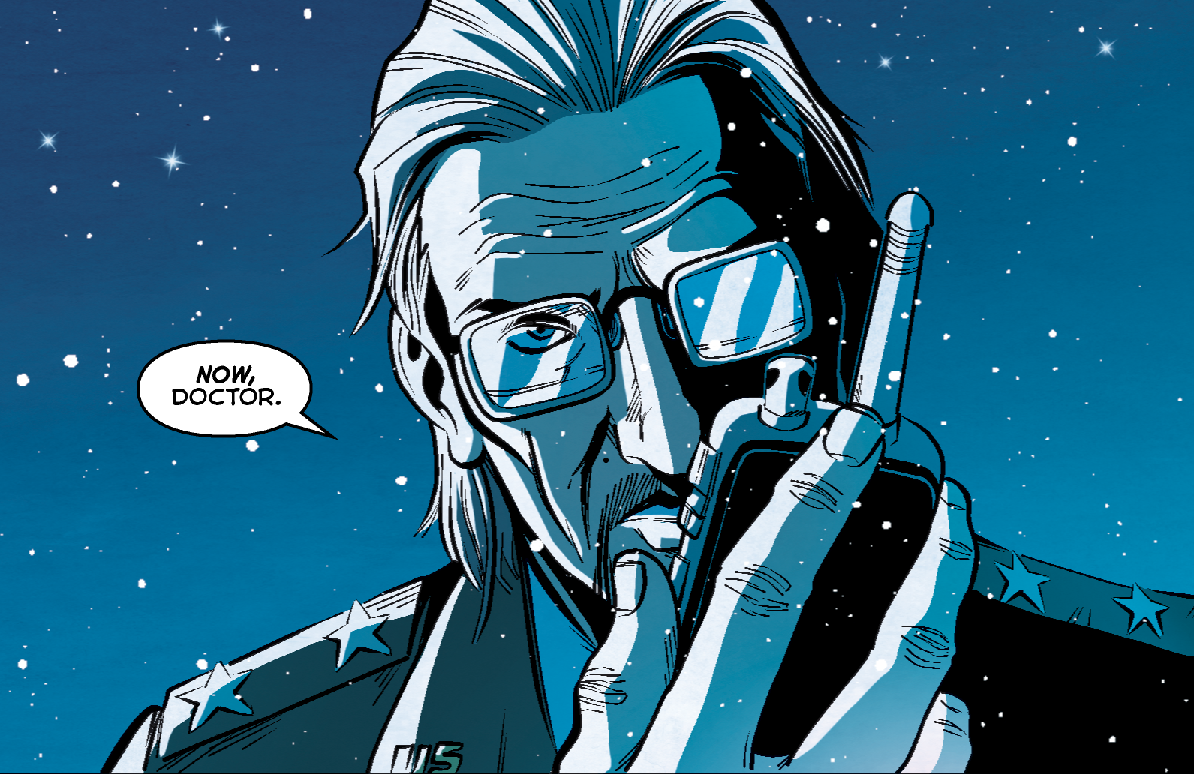
It was as simple as a screenshot. The Alyx announcement landed with a (very impressive) trailer and a set of (also very impressive) images, and one such bit of media took aim at the very linchpin of our story: it appeared that the Combine’s Citadel was under construction. Indeed, Valve’s own description clarified the Citadel’s place in the story: ‘[The] shadow of a rising Combine fortress known as the Citadel’. And with the promotional materials showcasing a Combine airship of some sort (The Vault?), it suggested a whole new angle on the Combine’s invasion. Given that APW was built on the notion that one of the Combine Citadels had vanished in the process of jumping from the Overworld to Earth, anxiety ensued.

Since HL2’s release in 2004, Valve has always been very clear about one golden rule: the games, and the games alone, are all that can be considered canon. If it’s cited, explained, discussed, or explored in the context of their games, it’s canon. If it’s an ancillary source such as, say, Raising the Bar or interviews with Marc Laidlaw (or really anyone from Valve, but Laidlaw was always the go-to guy for story-related questions. That’s not terribly surprising...he did write it), it’s not. And the games do not explain how the Citadels arrived on Earth, other than that once they did it took the Combine’s armies a mere seven hours to conquer the planet. That’s it!
We needed more than that, because we needed our Citadel to have ended up in a very strange place, and for the story to revolve around a set of opposing factions seeking to acquire it for their own ends. And so we looked to Raising the Bar, an (exceptionally good) art book on the game’s development, which included a vignette written by, surprise surprise, Marc Laidlaw. The vignette described a scene from early in HL2’s development, distributed to the team for inspiration, in which Eli Vance was Eli Maxwell, and Doctor Breen was simply ‘The Consul’. It was an expository sequence in which Maxwell would sit Freeman down and describe to him in detail all of the events they had missed in the intervening years.
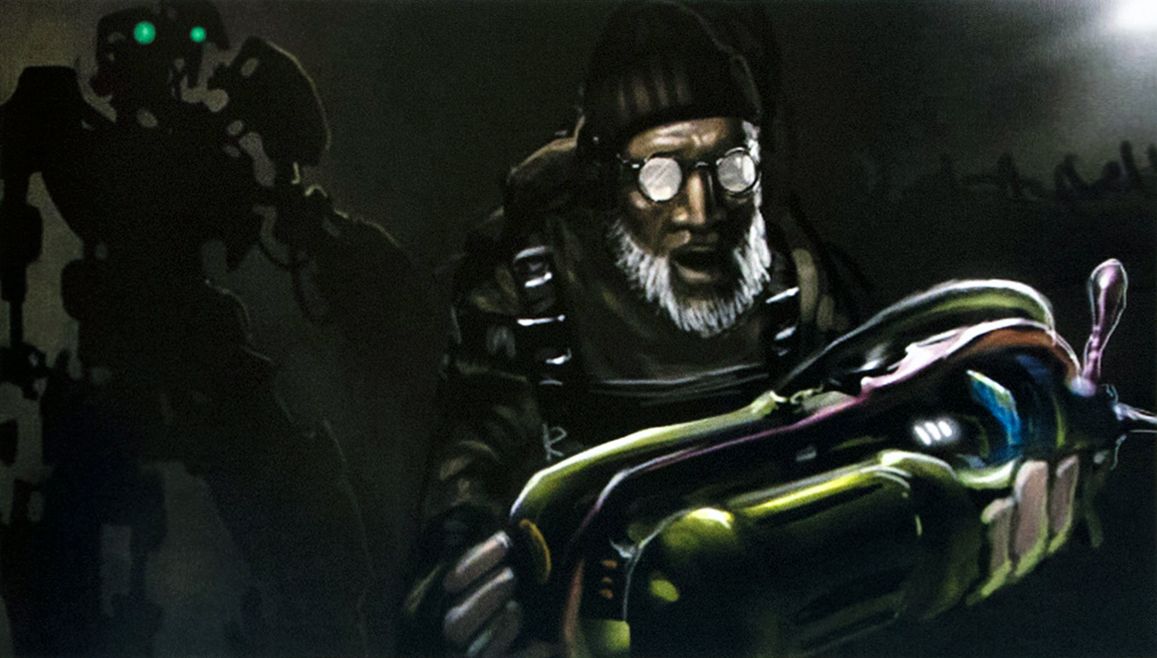
During said presentation, Maxwell stated the following:
"There was an illusion of safety, for a time. And then the Citadels appeared. It happened in a split second, all over the world. A chunk would disappear from the center of a city, to be replaced an instant later by one of these... headquarters for the Combine. Invasion Central."
Okay, so the Citadels teleported to Earth. Their arrival was instantaneous. Great, we can work with that! It’s a powerful and frightening image, and we felt that teleporting such an enormous object from one universe to another left plenty of margin for error. Ergo, ours could go off-course – and go off-course it did!
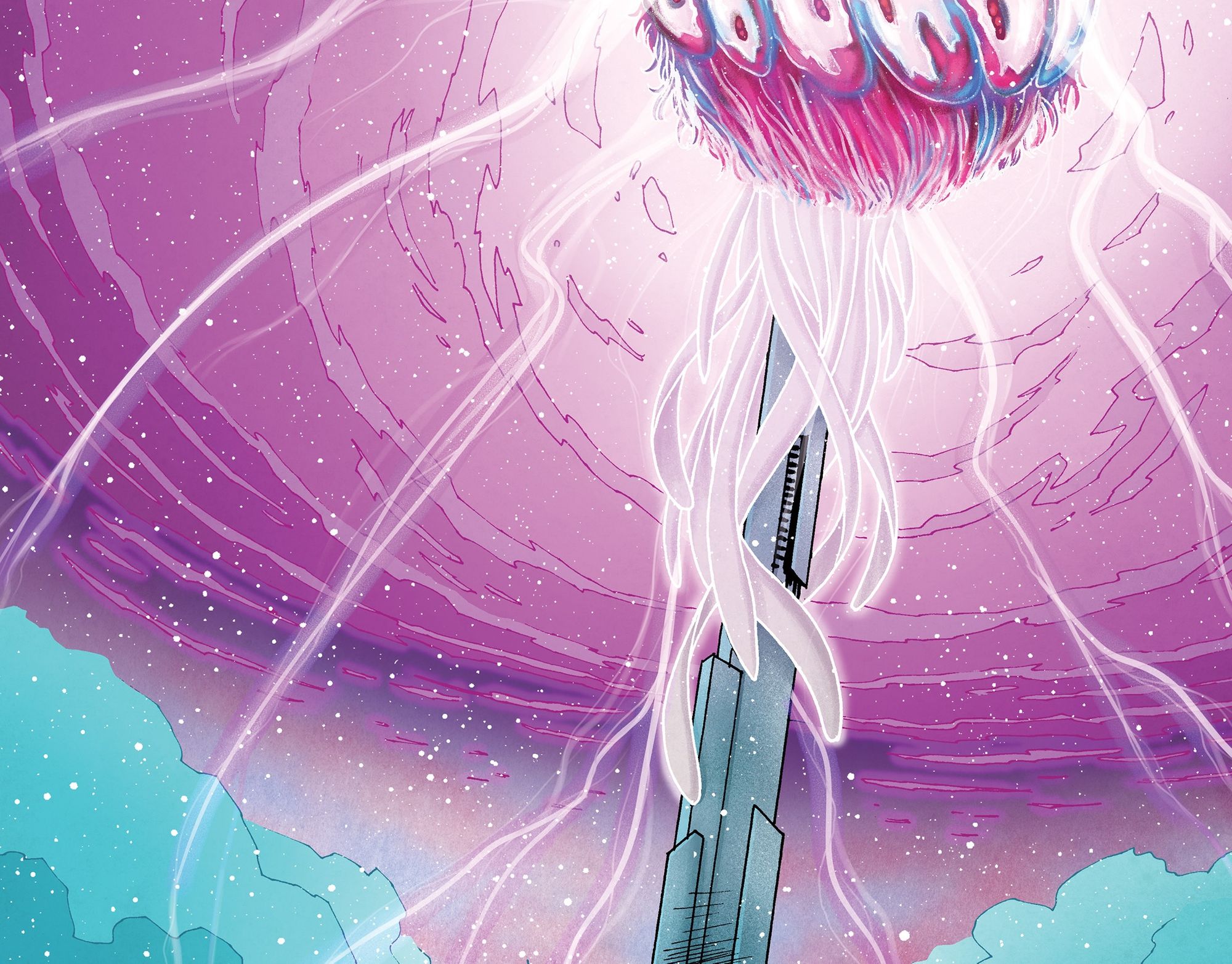
...and then it appeared they were being built. On Earth. Um, damn. The very crux of A Place in the West had been blown out of the water. We were sunk.
Except, obviously, we weren’t (but I got your hopes up!).
That’s the thing with fan fiction. We knew getting into this that not only would previous games contradict us (no matter how hard we studied them), but future games would be guaranteed to do so. We knew that risk upon embarking on this project and we had to be prepared for it. It’s just that I’d allowed myself to forget that fact (fortunately, Mike had not). Yeah, we still felt some angst about Alyx's revelation – would fans reject our comic, now that we had been so blatantly contradicted, or would they, as one lovely commentator pointed out, accept that perhaps some Citadels were built on Earth and others were teleported in?
...and did it matter? And that’s the real question, right? What actually matters in this enterprise? What exactly does it mean to be true to Half-Life?
As a teenager, I adored Half-Life, and the adherence to canon – a word I now recognize to be a plague upon creatives when abused – was of paramount importance. If it didn’t fit within the framework of the game’s established laws, be they characters, settings, or otherwise, it just had to be rejected. In other words, if it didn’t slot neatly into a wikipedia page it could fuck right off with that shit. But here’s the thing, as the really wonderful and delightful Rian Johnson once said:
Stories aren’t wikipedia pages.
They’re beholden to narrative, to themes, to characters, to emotion – to the textual content you actually invest in with your hearts and minds. For A Place in the West, we wanted to carry on Half-Life’s theme of empathetic science triumphing over a cold rationality used for power, not truth. And that feels way more important than how a Citadel arrived or who did what and when. It took...well, years to get my head around this. That anxiety I felt when Alyx was announced? That was the teenager in me, the dark cloud haunting fan forums in an attempt to pin down the ‘right’ details, as if that’s where all the love and adoration for a particular franchise comes from. It’s not – although it is a product of it.
Ironically, there was one man throughout the years who continually attempted to disabuse fans of the notion of ‘canon’, and that man was Marc Laidlaw. As I said in a previous blog post: we, the fans, didn’t listen. Should we have? Probably. But it was also part of the fun of being invested in that world. Speculation and theorizing are pretty vital elements in fan engagement, and it would be a real shame to rob them of that. You just need to remember that the argument over what’s canonical and what isn’t is less important than the bits you do care about – the elements that compelled you in the first place.
And it’s certainly not how you write a story.

We likewise knew that if we wanted to get truly ambitious with our story we’d need to expand beyond the confines of Valve’s games, which meant interpreting the mythology and coming to our own conclusions about what certain things meant.
A big part of that process was reading every interview, every article, every piece of information we could get our hands on to find the story we wanted to tell within the cornucopia of Valve’s collective imagination, whether it came from the many original iterations of Half-Life 2 or just really esoteric stuff like (paraphrasing) “the Advisors evolved from a race not unlike ourselves who became too reliant on their technology”. The quote, describing what appears to be the masterminds behind the Combine, was likely just the kernel of an idea that evolved and changed, but we knew we could do something with it as we began to ask ourselves big questions about who and what the Combine are. By the time we get to them in A Place in the West, you’ll see that what we’ve done is pick and choose the elements that best serve our story, whilst hopefully staying true to the initial sources of inspiration. And as Valve never really came out and clarified some of their details, we felt remarkably, perhaps recklessly, free in our approach.

Hilariously (to me), my angst over the Citadel was abated a couple of weeks ago during a Reddit AMA with the Alyx team, when they threw us a bone (cosmic spear?): as it transpires, the Combine did teleport the towers to Earth, but only the core, central spire, meaning that what you see in Half-Life 2 is a tower that has been bolstered by human materials on Earth. I smiled. We were safe (sigh – we always were, ya clown!). But in the immediate reveal, I turned to Mike and I said, “do we need to tweak our Citadel to look a little more...pared down?” It was a spur of the moment question, and within ten seconds we shot it down.
No. Of course not. We can’t change our comic on the basis of Valve’s choices, because as Wolpaw clarified in the same post, the decision was partly made to serve as a visual signifier that the game was taking place prior to the events of Half-Life 2. And really, that’s our answer right there, isn’t it? That’s why Laidlaw always tried to caveat his answers to fan queries with ‘see the games’, or some variation thereof: because Valve are building games first, and the story has to work for the game, not the other way around.

When they conceived White Forest, the idea that it was all set to go by the time the player got there seemed ludicrous, so they added a bit of history about Black Mesa buying out an old Cold War bunker decades back. Mossman’s betrayal in Half-Life 2? It’s clearly something Eli knew nothing about, but a bit of uncut dialogue from Episode Two reveals it was Eli who placed Mossman close to Breen in the first place, not expecting her to switch allegiances. Do I think this was a bit of storytelling baked into Half-Life 2 from the get-go? I do not. It might have been, but it seems more likely Valve wanted players to sympathize with Mossman as she was evidently going to play a considerable role in Episode Three. Did the character of Alyx come pre-packaged with the story that the G-Man rescued her from Black Mesa as a child? Probably not.
Conjecture? Sure. But it’s clear to me that whilst Valve may have mapped out the broad strokes of their story, they commit to those pieces that seem the most fruitful for whatever game it is they’re trying to make at the time. Valve have shown a willingness to backtrack or even contradict a storytelling element if it gets in the way of a bit of gameplay or mythology they want to explore. And they’re right to.
With all that being said, how could we ever be expected to chase Valve’s tail? It would drive us bananas (more so, and that’s bad for everyone). Going forward then, how do we incorporate a newly invigorated Half-Life franchise into a story we’ve very carefully planned out? It’s actually pretty simple! If there’s a revelation in Alyx that can either improve our story or be included without hampering what we’ve already written, we’ll do it. But if it doesn’t, then that’s just too bad. We won’t be changing, altering, or re-writing any aspect that contradicts what they’ve newly established because that isn’t a way to tell stories.
It isn’t a way to tell our story. And if anything is profoundly liberating, it’s that. I suppose one could reasonably ask, now we're at the end of a rather rambling post clearly intended to mitigate my own anxiety, why bother at all? As in, why make one of your chief characters the leader of the HECU - why even tempt fate by dabbling in the canonical realm? Well...
Where's the fun in that?
And if all else fails...
